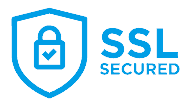When you become sidetracked, you lose valuable working time, make premature decisions and become inefficient. Not being able to concentrate on a single task causes assignments to get turned in late and reduces the quality of your work since you’re distracted.
Being productive and avoiding procrastination requires diligent focus. By focusing on one thing at a time (single-tasking), not only will you get more accomplished, but you’ll also do it quicker.
Explore emotional well-being with BetterHelp – your partner in affordable online therapy. With 30,000+ licensed therapists and plans starting from only $65 per week, BetterHelp makes self-care accessible to all. Complete the questionnaire to match with the right therapist.
What is Single-Tasking?
Single-tasking, also known as monotasking, is the technique of dedicating yourself to one task at a time, and keeping potential interruptions to a minimum until the task is either completed or you’ve spent a significant amount of time on it. Its counterpart is multitasking, which is trying to perform multiple tasks at once.
The benefit of single-tasking over multitasking is your focus isn’t widely distributed so you’re working more efficiently.
With single-tasking, 100% of your focus is being put on one activity. Whereas with multitasking, you might be giving 20% of your focus to five different activities. As a result, you’re actually taking more time to complete the tasks and probably aren’t doing any of the tasks at your highest level.

Single-tasking has helped some of the most successful people in the world (as you’ll see in a bit) be more productive and achieve greatness. So trust me, it works.
I highly suggest checking out these two books to learn more about single-tasking and how it can help you level up your entire life:
Singletasking: Get More Done-One Thing at a Time

The ONE Thing: The Surprisingly Simple Truth Behind Extraordinary Results

Benefits of Single-Tasking
Clifford Nass, a Stanford University Psychology Professor who conducted one of many research projects on the effects of multitasking, said in an interview:
“The research is almost unanimous, which is very rare in social science, and it says that people who chronically multitask show an enormous range of deficits.”
In simple terms, people are less productive when they work on more than one thing at a time. That means that focusing on one task increases your productivity. But that is not all it does. Being focused also increases the quality of the work you produce.
When asked about how focusing on one thing at a time helped Apple become more effective at delivering innovative products consistently, Steve Jobs, Co-founding owner of Apple said:

Steve Jobs
People think focus means saying yes to the thing you’ve got to focus on. But that’s not what it means at all. It means saying no to the hundred other good ideas that there are. You have to pick carefully.
Apple, highly regarded as the leading brand in revolutionary technology, used and profited off the principle of focusing on a single task. Their products are superior and their brand is elite because Jobs was able to build upon the very best of everyone’s efforts, as opposed to encouraging rapid productivity at the expense of quality.
Duplicate that principle in your life by employing these productivity tips, and you will discover the benefits of not multitasking all the same.
And here’s a entertaining (and educational) video about single-tasking.
Alright, so the next logical question is how do you transition from multi-tasking (or nothing at all) to single-tasking?
Read on to find out.
How to Start Single-Tasking
Here are some helpful hacks to start single-tasking and avoid taking on too many tasks at once:
1. Don’t Rely on Your Memory—Write Everything Down
When writing a to-do list, include actionable tasks that are broken down from a main goal. That means instead of writing on your to-do list that you need to complete a file, write down the documents, insertions and corrections that would need to be competed in order to make that file complete.
By organizing yourself this way, you don’t have to interrupt your focus while working on a task to think about how you’re going to complete it. Creating an actionable to-do list keeps your mind can be at ease. It knows what needs to be done and is confident that nothing will be forgotten.
Even more, it takes the pressure and stress away from trying to remember not to forget to do something. We have all been in that position where we need to constantly remind our selves to remind ourselves.
Pick up this nifty little to-do list to write down all your tasks.

By writing it down, you know that you will not forget it. So that is less mental energy that is preoccupied, and more that can be dedicated to the task at hand.
2. Set Up Your Day the Night Before
In order to get the most out of your time each day, you need to start the day prepared. By writing your to-do list the night before, you can be ready to start your day with your feet running because you already have you tasks listed out and prioritized.
All you have to do is get yourself situated and start with task number one. Then work your way down the list as you check each task off one by one. Begin with the end in mind. Consider your end-of-the day goals, and make a to-do list that lists all the steps needed to complete those goals.
As a word of caution, do not spend too much time or energy contemplating whether the list is accurate or complete while engaging in the work. Those concerns should be addressed when writing the list. Accept that your to-do list may be missing a few things, but they can always be added tomorrow.
As long as you did your best to make all the inclusions to the best of your knowledge, do not beat yourself up if something new pops up in the middle of the completing your tasks.
Simply assess the tasks’ importance. If it needs to be done immediately, do so. Then return to the task you were working on previously. If the surprising task can wait, then simply add it to the bottom of the list and continue as you were.
3. Prioritize Your Tasks & Tackle Them One at a Time
Instead of trying to do several tasks at once, studies show that you are more effective and get more accomplished when one task is completed before another is started (single-tasking). That means that it is more beneficial to organize your tasks in terms of priority, and then work on one at a time from start to completion.

The way you prioritize can change day to day.
For example, on Monday a task may become the priority for the day because it’s time sensitize.
On Tuesday, a task may deserve priority because in order to complete any of the other task scheduled for the day, this particular task must be completed first.
Then on Friday, a task may be the priority first thing in the morning because it was supposed to have been done Monday but kept getting pushed down the list. That means this task is urgent because by completing it, you are closing up loose ends. Regardless of the reason for the priority, as long as you identify them, they can fluctuate day by day, and in come cases, several times a day.
Say Goodbye to Multitasking
By implementing these small tips into your daily routine, you will notice a significant improvement in the amount and quality of work you’re able to complete. That will carry over to every area of your life, as you are less stressed, more relaxed, more efficient, and able to be more productive at getting things done.
While the results will not happen overnight, activating the mental focus needed to do one task at a time is an extremely valuable skill that will improve the quality of your life.
Need more tips to be more productive and less stressed? Check out our list of 170 stress management techniques!
Resources:
https://hbr.org/2012/03/the-magic-of-doing-one-thing-a.html
https://hbr.org/2007/10/manage-your-energy-not-your-time/ar/1





